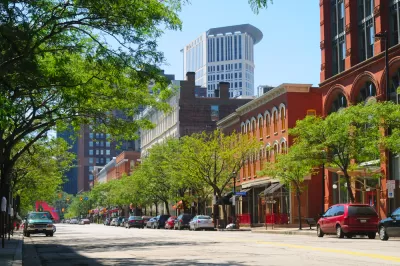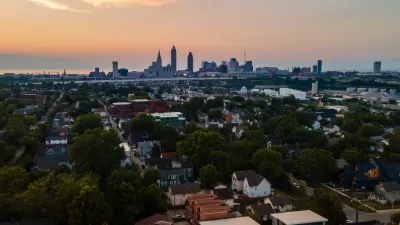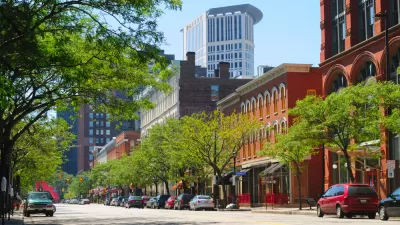A ULI-led symposium in Cleveland is looking at how an update of the city's outdated zoning code could revive some neighborhoods in the city.

During an all-day conference last week, Cleveland planners, developers, lawyers, community development officials, and architects came together to discuss, what was described as "an extensive dialogue on reshaping the code to encourage development and to make the city more attractive and livable." Reporting in The Plain Dealer, Steven Litt writes that the current code impedes walkability and separates land-uses, making it more difficult to create the pedestrian friendly environments urban dwellers are currently seeking.
One of the topics attendees are looking at is form-based zoning, which has been successfully implemented in several areas of the city. However, Cleveland's mayor is asking that the benefits of any zoning code changes be felt citywide.
As for Mayor Frank Jackson, he said he viewed form-based zoning as "a great tool, but as I tell my people, the measure of a tool is how it is used."
He said he would judge the new zoning on whether it enables economically challenged neighborhoods to participate in the growth that has occurred in a half-dozen popular areas, such as Ohio City, Tremont, University Circle and Detroit-Shoreway.
Developer Ron Ratner of Forest City advised in his key note address to the symposium that the city be careful in its approach to adopting form-based zoning in the city—understanding that it won't work in all areas. "You can't force the market to create density and walkability, but you can reinforce it where it does work," he said.
FULL STORY: Could a new zoning code make Cleveland a greener, healthier and more equitable city?

Planetizen Federal Action Tracker
A weekly monitor of how Trump’s orders and actions are impacting planners and planning in America.

Maui's Vacation Rental Debate Turns Ugly
Verbal attacks, misinformation campaigns and fistfights plague a high-stakes debate to convert thousands of vacation rentals into long-term housing.

Restaurant Patios Were a Pandemic Win — Why Were They so Hard to Keep?
Social distancing requirements and changes in travel patterns prompted cities to pilot new uses for street and sidewalk space. Then it got complicated.

In California Battle of Housing vs. Environment, Housing Just Won
A new state law significantly limits the power of CEQA, an environmental review law that served as a powerful tool for blocking new development.

Boulder Eliminates Parking Minimums Citywide
Officials estimate the cost of building a single underground parking space at up to $100,000.

Orange County, Florida Adopts Largest US “Sprawl Repair” Code
The ‘Orange Code’ seeks to rectify decades of sprawl-inducing, car-oriented development.
Urban Design for Planners 1: Software Tools
This six-course series explores essential urban design concepts using open source software and equips planners with the tools they need to participate fully in the urban design process.
Planning for Universal Design
Learn the tools for implementing Universal Design in planning regulations.
Heyer Gruel & Associates PA
JM Goldson LLC
Custer County Colorado
City of Camden Redevelopment Agency
City of Astoria
Transportation Research & Education Center (TREC) at Portland State University
Jefferson Parish Government
Camden Redevelopment Agency
City of Claremont




























